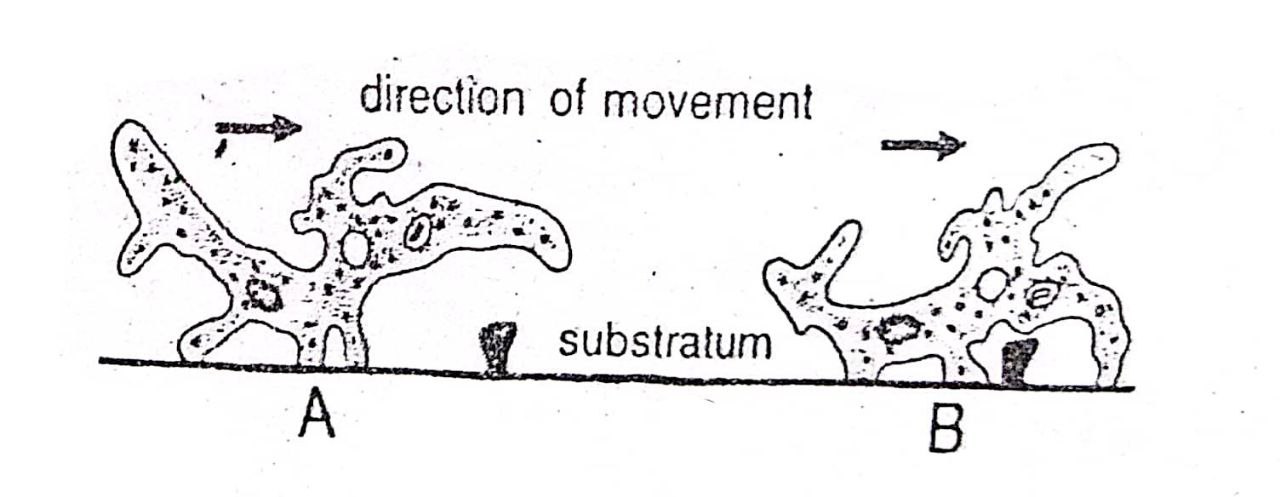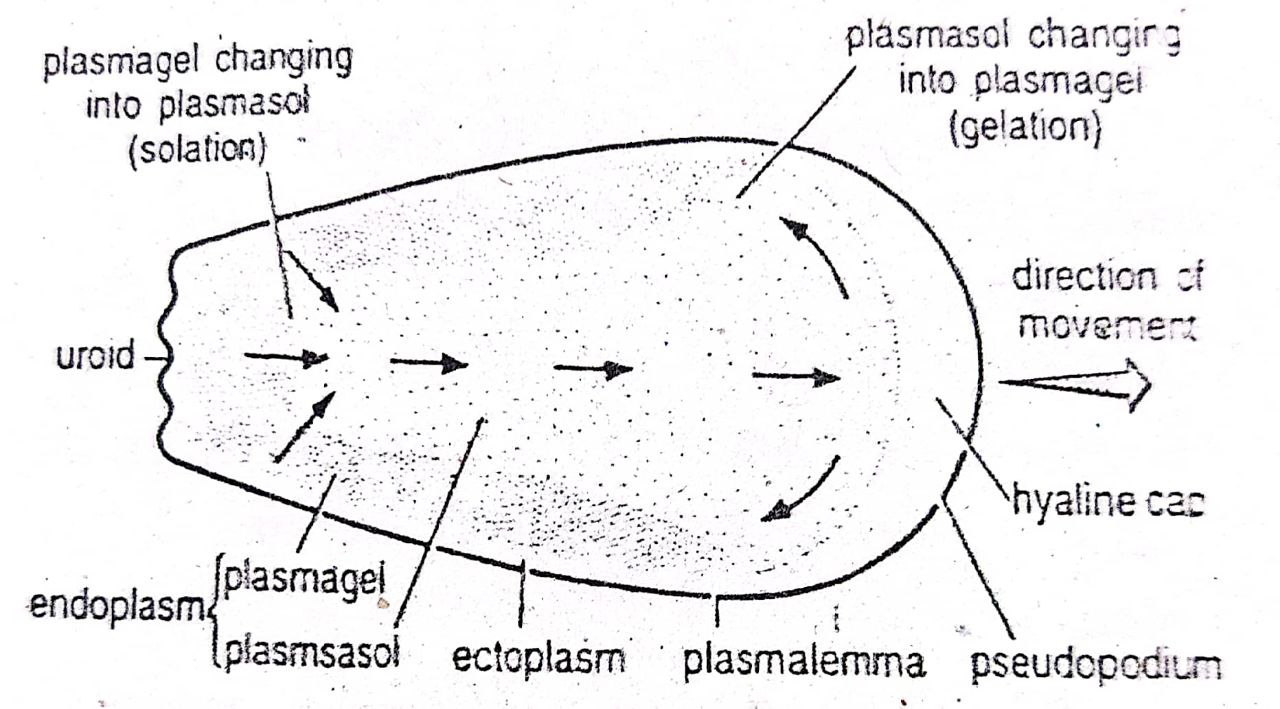Amoeba proteus is a single-celled organism that moves by a process called amoeboid movement. This type of movement is achieved through the extension and retraction of pseudopodia, which are temporary protrusions of the cell’s cytoplasm.
When an Amoeba proteus is in motion, it extends one or more pseudopodia in the direction of movement, which adhere to the substrate. The rest of the cell then flows forward, propelled by the force generated by the contractile proteins in the cytoplasm. Once the cell has moved forward, the pseudopodia are retracted, and the process is repeated.
Theories of Amoeboid Movement
- How the cytoplasmic flow is effected and the pseudopodia are formed is not clearly known.
- Since the first observation of amoeboid movement by Rosel von Rosenhof in 1755, several theories, or hypotheses, have been proposed to explain the mechanism of amoeboid movement.
- But the evidence supporting the theories is unfortunately insufficient.
A brief description of these theories is given below.
1. Contraction-Hydraulic Theory
- Schultze (1875) was of the view that plasmagel (ectoplasm) undergoes contraction at the posterior end and causes protoplasmic currents to flow forwards, pushing the more fluid-like plasmasol (endoplasm) forward.
- This results in the formation of pseudopodium and propelling the body ahead.
2. Surface-Tension Theory
- The movement of Amoeba is comparable with the movement of a fluid glouble, like a mercury droplet.
- A pseudopodium is formed by an outflow of protoplasm from a weak point where surface tension becomes reduced by external or internal factors.
- This theory was supported by Rhumbler and Butschli (1898), but it is not supported now-a-days.
- The theory assumes a liquid nature of the body surface, but in the majority of amoeboid forms outer body surface remains rigid and gelatinized.
3. Rolling Movement Theory

- This theory was proposed by Jennings (1904).
- He investigated on Amoeba verrucosa.
- He explained that amoeboid movement takes place due to the rolling movement of the body surface.
- The movement is comparable to the rolling movement of a fluid-filled sac on a substratum.
- He observed that carbon particle on the amoeba’s upper surface first passes forward and then turned downwards.
- Jennings’s finding may be correct for the Amoeba verrucosa but it is not applicable to all the amoeba including Amoeba proteus.
4. Walking Movement Theory

- This theory was proposed by Dellinger (1906).
- He studied the locomotion of amoeba and investigated on Amoeba proteus.
- He came to the conclusion that a contractile substance is present in the cytoplasm.
- The contractile substance is mainly responsible for the amoeboid movement.
- According to this theory, the pseudopodia of amoeba become attached to the substratum and then contract to pull the body forward.
- Looks like the amoeba appears to walk on its leg-like pseudopodia.
5. Sol-Gel Theory or Change of Viscosity Theory

- This theory was proposed by Hyman (1917).
- This theory was supported by Pantin (1923-26) and Mast (1925).
- It is the most widely accepted view on the movement of amoeba as it offers the best explanation for amoeboid locomotion.
- According to this theory, the cytoplasm of amoeba is differentiated into ectoplasm and endoplasm and later further distinguished into plasmagel and plasmasol.
- According to the sol-gel theory, the amoeboid movement involves four processes occurring simultaneously. The processes are given below.
- I) The outermost plasmalemma becomes attached to the substratum.
- II) There is a local partial liquefaction of the plasmagel at the anterior end. This causes the plasmasol to flow forward and forces the plasmagel to produce a pseudopodium. As plasmasol enters the newly formed pseudopodium, it rapidly changes into plasmagel.
- III) At the posterior end, the plasmagel turns into plasmasol so that the constant flow of plasmasol is maintained towards the direction of movement.
- IV) The outer tube of plasmagel contracts and moves from in front backward, while the main body travels forwards.
————– THE END —————
Read More:

Md Ekram Hossain Bhuiyan is a passionate student currently pursuing his studies at Jagannath University in Dhaka. He is a zoology major and his love for animals, nature, and wildlife is evident in his academic pursuits. Ekram is a curious and adventurous individual who always seeks to learn more about the world around him. His passion for animals began at a young age, and he has since dedicated himself to studying the behavior, anatomy, and habitats of various species.
He finds peace in being surrounded by the beauty of nature and observing the creatures that call it home. He believes that it is important to protect and preserve the natural world for future generations.
As a student of zoology, Ekram is dedicated to expanding his knowledge of the subject. He is a hardworking individual who strives for excellence in his studies and is always eager to take on new challenges. Ekram is a driven and compassionate individual who is dedicated to his studies and his passion for animals, nature, and wildlife.